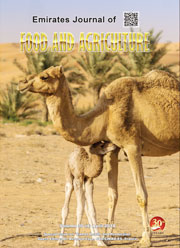COMPARISON OF NUTRIENT COMPONENTS OF CHINESE LETTUCE AND AMERICAN LETTUCE
DOI:
https://doi.org/10.9755/ejfa.2015-08-603Keywords:
Food preference, Lettuce, Nutrient components, China, USA, Trace elementsAbstract
Food preference affects the human health and food species, and different countries have different food preference and habits. Lettuce was selected to study the effects of food preference on the food nutrition of Chinese foods and American foods. The results showed that the Chinese lettuce can store much less time than the lettuce from United States, which should be caused by that lettuce from China has more leaves and less stalks than that from USA, and Chinese lettuce contain more moisture. Llettuce from China significantly contained more protein and fatty acids than those from USA, but contained less carbohydrate and dietary fiber; and concentrations of most trace elements (Ca, Fe, Zn, Se, Cu) in lettuce from China were significantly higher than that from USA except Mn. The suggestion is that the different varieties of lettuce should be exchanged for food, which can make the human body nutritional balance of Protein, fatty acids, carbohydrate, dietary fiber.










 .
. 